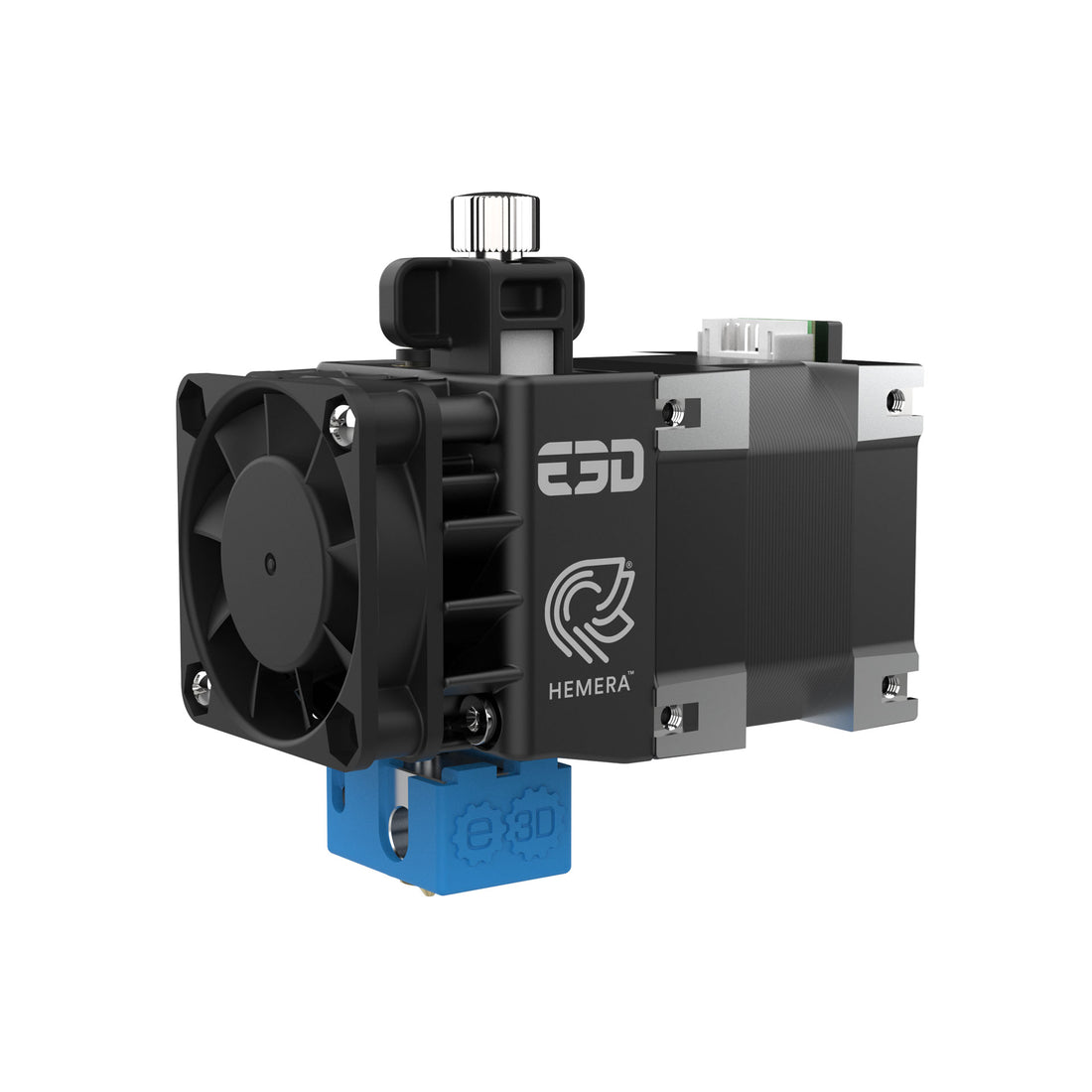Ever wondered why Hemera comes in 12V and 24V options? It’s all to do with your 3D printer’s power supply. We sell products with 12V or 24V DC standards because these are the most common rated power supplies in FFF 3D printers today – it’s very likely your 3D printer is using one or the other. But how do you know which one is right for you? This blog runs through the key power supply considerations to watch out for when making 3D printer upgrades.

Not sure which HotEnd voltage to choose? Read on…
The power supply (or PSU) delivers power to all the important bits of your 3D printer, including the fans, the heated bed, and most importantly: the HotEnd. Each of these are power rated components, so getting enough power to them is important – otherwise your 3D printer might not be able to reach its target HotEnd or heated bed temperature.
Before upgrading your 3D printer, we recommend checking your power supply directly to be absolutely sure of what you’re working with.

This is what a PSU looks like. This one is rated at 24V
Which output voltage is better?
If you’re choosing a new power supply, it’s wise to go with 24V, but either standard will work fine as long as you use components with a corresponding rating.
Using a 12V supply means you need to double the current than that of a 24V supply for the same device you are powering. This means you need thicker wires to handle the larger currents, so more copper needs to be mined to manufacture it – meaning a larger environmental impact.
When choosing a PSU, it’s a good idea to budget at least 10% more power than you need – this will account for voltage drops, increases in resistance due to higher ambient temperatures, and handling any transients (i.e. current spikes when motors and heaters turn on). Plus, it’s always good to have some extra power if you want to upgrade your 3D printer with other rated components later.
Is it dangerous to use a higher rated power supply with lower rated components?
A PSU gives components the ability to draw the current they need (up to a limit). It’s the component that “pulls” in the current it needs – the PSU can only limit it. If you take a 600W PSU and plug it straight into a 40W heater cartridge, only 40W will be used. So, a PSU that has much more power than it needs won’t really do anything bad. In a short circuit event, more power could be dumped into the component or device that is short circuited – but that would happen with any PSU, just with a low power one it won’t dump as much before the PSU’s short circuit protection kicks in.
Which rated parts do I need?
If you have a 12V PSU, get a 12V Hemera. If you have a 24V power supply, get a 24V Hemera. Simple enough, right? But beware! Our customer service team have encountered these common user pitfalls to watch out for:
- The manufacturer has the wrong PSU rating listed on the printer’s spec sheet because they switched it out for something else in the middle of a production run without updating the documentation.
- A customer has bought a second-hand 3D printer where the previous owner had swapped out the PSU for something else without making it clear.
Spec sheets are usually a trustworthy source of information, but we strongly recommend checking your PSU directly before buying upgrades. We recommend this because it avoids an annoying halt to your upgrade project if you buy the wrong components, and, more importantly, because we’re unable to refund the return cost of items ordered in error. (Sorry! But if you order the wrong parts, you can still order new voltage-specific components separately, which works out cheaper than buying a whole new unit).
How to check your PSU
Unplug your 3D printer from the mains (or ‘outlet’ if you’re American). Then make sure you’ve unplugged your 3D printer from the mains. Then check one more time that you’ve unplugged your 3D printer from the mains. You don’t want to be handling your 3D printer’s PSU when it’s plugged in to the mains.
Check one more time that you’ve unplugged your 3D printer from the mains, then, before you touch anything or disconnect any wires, wait at least 30 seconds to ensure everything has discharged (this is because some cheaper boards/PSUs don’t have bleed resistors to quickly discharge capacitors, which can result in a shock. To be clear, that’s an electric shock – not a shock that some manufacturers don’t include bleed resistors in their electronics design, which is also shocking).
Did you unplug your 3D printer from the mains? If so, you can start trying to get at the PSU. Sometimes it’s enclosed within the footprint of the printer, sometimes it’s in a separate control box.

Creality users: your PSU is probably in a separate control box like this.
(Also: The Creality CR-10 V3 uses a genuine E3D Titan extruder!)
Inside your 3D printer, the power supply is usually a large silvery rectangular box. Look at the label on it, it will have a number, probably ‘xxx-xxx-12’, or ‘xxx-xxx-24’. These numbers indicate the output voltage. The output power is also indicated in the numbers before that.
For instance, A Creality CR-10 V3 uses a ‘Meanwell LRS-350-24’ PSU. The ‘350’ indicates the power rating, so this one can output 350W. The ‘24’ at the end indicates it has an output voltage of 24V. So, a 24V Hemera is the one to choose here.
This encoding is explained in the LRS series datasheet:


Meanwell is a manufacturer of PSUs commonly used in 3D printers, and lots of other electronic devices, too.
How to get help
Did we miss anything? Let us know. If you’re stuck or would like further advice, we also offer lots of ways to get help. The E3D Official Discord is full of 3D printing experts who can assist you with general 3D printing queries. Our customer service agents are available to answer any questions you have about E3D products. You can also find a wealth of helpful technical info at the E3D Help Center, including datasheets and detailed Hemera upgrade guides.
P.S. If you’re poking about inside your 3D printer, don’t forget to unplug it.

